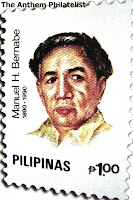The National Anthem of Norway

Rikard Nordr
 aak was a Norwegian composer, born in Christiana (Oslo). He is best known for having composed the Norwegian national anthem. Nordraak's musical gifts became evident at an early age, but as for many other artists at that time, a different career was already planned. He was going to pursue a career within business, and when he was fifteen he was sent to business school in Copenhagen. Nonetheless his musical interests prevailed and instead of studying business he ended up studying music, and in 1859 he went to Berlin for advanced studies. After six months he had to return home and he continued studies in Oslo, and his first compositions came during the winter of 1859-60. In 1861 he went back to Berlin to continue his studies, and he stayed there for two more years.
aak was a Norwegian composer, born in Christiana (Oslo). He is best known for having composed the Norwegian national anthem. Nordraak's musical gifts became evident at an early age, but as for many other artists at that time, a different career was already planned. He was going to pursue a career within business, and when he was fifteen he was sent to business school in Copenhagen. Nonetheless his musical interests prevailed and instead of studying business he ended up studying music, and in 1859 he went to Berlin for advanced studies. After six months he had to return home and he continued studies in Oslo, and his first compositions came during the winter of 1859-60. In 1861 he went back to Berlin to continue his studies, and he stayed there for two more years. The compositions that he himself marked opus 1, were published in 1863, and contained six songs with texts by the poet Bjornstjerne Bjornson, amongst others. At this time Nordraak also composed Ja, vi elsker, which in 1864 became the Norwegian national anthem.
He later wrote music for Bjørnson's play Maria Stuart of Scotland, and he published his Opus 2, Five Norwegian Poems, consisting of songs and poems by Bjørnson and Jonas Lie. This was the last of his compositions that would be published during his lifetime. In May 1865 he returned to Berlin to continue his education, but he was stricken with tuberculosis in October and died the following March, only 23 years old. Part of his life-story was dramatised in the musical Song of Norway.
Nordraak did not live long enough to produce much music. About forty compositions, mostly smaller works like songs, pieces for male choir and a few piano compositions, have been preserved. The biggest of these compositions, is the Scherzo Capricio for piano solo, given the opus number 3, published posthumously by Edvard Grieg. This is a kind of rondo, using several features from the Norwegian folk music; rhythms typical in slatter, and dissonances typical for the hardingfele. However, the thematic material does not have this connection with the folk music.
Nordraak’s main contribution to the Norwegian music history was, with his passionate patriotism and great love to the folk music, to be an inspiration for contemporary composers, such as Edvard Grieg. They met in Copenhagen and became close friends. When Grieg heard of Nordraak's death, he composed the famous Funeral March in Memory of Rikard Nordraak.






